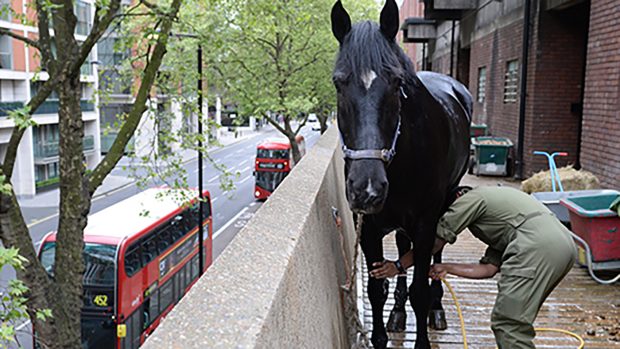1, Always check if planning permission is required. Generally, it depends whether the proposed stable is “within the confines of a domestic dwelling” — including your garden — or is to be sited on agricultural land.
2, If you have a choice about the siting of a stable block, your main consideration must be the prevailing wind. The doors should face away from this to prevent rain, sleet and snow from being blown in.
3, Many books say that the ideal position is facing south, but the strong sun in summer can make the stables very hot, especially if they are of wooden construction.
4, East-facing is a popular compromise because the stables get the morning sun in winter and most of Britain’s strongest rain-bearing winds come from the west. North facing stables are exceptionally cold in winter and get very little sun, which makes drying floors nearly impossible.
5, Tradition states that drains are placed to the rear of the stable, but a drain at the front is more practical. You also need to plan a route for the effluent, so make sure that the floor runs on a gentle downward slope towards the drain.
6, Ideally you want the muck heap close enough to the stable to minimise the chore of pushing a barrow through deep snow in the winter but far enough away not to be a fire hazard.
7, If possible plan your stables with a view to possible expansion in the future. You may think that you only need a couple of boxes now, but circumstances change and careless initial siting could scupper future plans.
8, Plan the site so that you have easy access to your grazing. For working owners, who have to do their horses in the dark, it helps if the yard entrance/exit leads directly into the field.
9, It is a good idea to have a fenced and gated-off area no less than 9ft in front of the stables to prevent horses at grass from interfering with their stabled companions.
10, Take account of the easy availability of electricity and water when costing the project. It can be surprisingly expensive, so get a quotation from your local electricity and water companies first.
11, Weigh up the pros and cons of different materials for the stables. Supplied and erected wooden stables are the cheapest option and offer a good medium-term solution, but remember that they are hot in summer and cold in winter
12, Always go to a reputable supplier who can give you names and addresses of former customers. You can then ring them, or arrange a visit, to find out how good the service was.
13, The best supplier may not be the cheapest and do check what is included in the original price. Some firms include such things as rag bolts — which secure the wooden structure to the base — but others charge extra for them and this can become expensive. Guttering and all roofing materials should be included.
14, Erection of the stable is usually included in the price, but delivery can be a surprise “extra”. If you live near the supplier, it can be worth trying to negotiate a reduced charge.
15, You will not save much by collecting and erecting the stables yourself. Professional suppliers will do the job faster and if there were a problem later, you would have grounds for a complaint.
16, You must have the base ready well before delivery. Ready-mixed concrete works out almost as cheap as mixing it yourself — and is a lot less work. However, don’t forget that you will need to arrange some help to spread and level the concrete; it isn’t a one-man job.
17, You will also need a single course of brickwork, on which the stables sit, laid down. You should get a detailed drawing or plan from the supplier so that the bricks are laid in the correct position. Check and double check all measurements carefully. Remember, if you make a mistake, it cannot be rectified on the day the stables are erected because the mortar must have at least three days to set.
18, Make sure that there is good access to the site for the supplier’s lorry. This could mean moving other vehicles or even dismantling fencing. Make your contingency plans in plenty of time and ask the supplier what size and type of lorry he uses.
19, Make sure that an electricity supply is available or tell the supplier that he will need to provide a generator.
20, On the day the stables are erected, it is better to keep out of the way! No matter how much you might want to help, the suppliers work more effectively to their own routine. The best, and most effective thing you can do is give them plenty of cups of tea or coffee.




